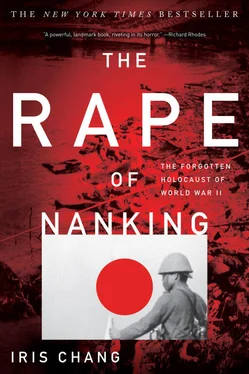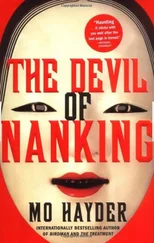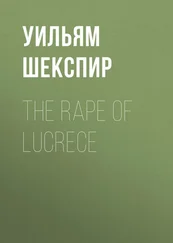On New Year’s Day, Matsui was still upset about the behavior of the Japanese soldiers at Nanking. Over a toast he confided to a Japanese diplomat: “My men have done something very wrong and extremely regrettable.”
But the raping went on, and the killing went on. Matsui seemed incapable of stopping it. If one can believe the story Matsui told years later, his brief visit to Nanking even reduced him to tears in front of his colleagues. “Immediately after the memorial services, I assembled the higher officers and wept tears of anger before them,” Matsui told his Buddhist confessor before his hanging in 1948. “Both Prince Asaka and Lieutenant General Yanagawa… were there. I told them everything had been lost in one moment through the brutalities of the soldiers. And can you imagine it, even after that, those soldiers laughed at me.”
THE COMFORT WOMEN: THE LEGACY OF NANKING
One of the most bizarre consequences of the wholesale rape that took place at Nanking was the response of the Japanese government to the massive outcry from Western nations. Rather than stifle or punish the soldiers responsible, the Japanese high command made plans to create a giant underground system of military prostitution—one that would draw into its web hundreds of thousands of women across Asia. “The Japanese Expeditionary Force in Central China issued an order to set up comfort houses during this period of time,” Yoshimi Yoshiaki, a prominent history professor at Chuo University, observes, “because Japan was afraid of criticism from China, the United States of America and Europe following the cases of massive rapes between battles in Shanghai and Nanking.”
The plan was straightforward. By luring, purchasing, or kidnapping between eighty thousand and two hundred thousand women—most of them from the Japanese colony of Korea but many also from China, Taiwan, the Philippines, and Indonesia—the Japanese military hoped to reduce the incidence of random rape of local women (thereby diminishing the opportunity for international criticism), to contain sexually transmitted diseases through the use of condoms, and to reward soldiers for fighting on the battlefront for long stretches of time. Later, of course, when the world learned of this plan, the Japanese government refused to acknowledge responsibility, insisting for decades afterwards that private entrepreneurs, not the imperial government, ran the wartime military brothels. But in 1991 Yoshimi Yoshiaki unearthed from the Japanese Defense Agency’s archives a document entitled “Regarding the Recruitment of Women for Military Brothels.” The document bore the personal stamps of leaders from the Japanese high command and contained orders for the immediate construction of “facilities of sexual comfort” to stop troops from raping women in regions they controlled in China.
The first official comfort house opened near Nanking in 1938. To use the word comfort in regard to either the women or the “houses” in which they lived is ludicrous, for it conjures up spa images of beautiful geisha girls strumming lutes, washing men, and giving them shiatsu massages. In reality, the conditions of these brothels were sordid beyond the imagination of most civilized people. Untold numbers of these women (whom the Japanese called “public toilets”) took their own lives when they learned their destiny; others died from disease or murder. Those who survived suffered a lifetime of shame and isolation, sterility, or ruined health. Because most of the victims came from cultures that idealized chastity in women, even those who survived rarely spoke after the war—most not until very recently—about their experiences for fear of facing more shame and derision. Asian Confucianism—particularly Korean Confucianism—upheld female purity as a virtue greater than life and perpetuated the belief that any woman who could live through such a degrading experience and not commit suicide was herself an affront to society. Hence, half a century passed before a few of the comfort women found the courage to break their silence and to seek financial compensation from the Japanese government for their suffering.
THE MOTIVES BEHIND NANKING
Now we come to the most disturbing question of all—the state of the Japanese mind in Nanking. What was inside the mind of the teenage soldier handed a rifle and bayonet that propelled him to commit such atrocities?
Many scholars have wrestled with this question and found it almost impossible to answer. Theodore Cook, who coauthored the book Japan at War: An Oral History with his wife Haruko Taya Cook, admits that the brutality of the Rape of Nanking baffles him. He finds no parallels in the history of civil war in Japan; rather, systematic destruction and mass slaughter of urban populations appear to be part of Mongol rather than Japanese history. Trying to examine the mind-set of the Japanese at Nanking, he said, was like peering into “a black hole.”
Many find it difficult to reconcile the barbarism of Nanking with the exquisite politeness and good manners for which the Japanese are renowned. But certain military experts believe that these two seemingly separate behaviors are in reality entwined. They point to the awesome status of the ancient samurai, who for centuries possessed the power to lop off the head of a peasant if he failed to give the warrior a polite answer to his questions. “To this day,” an American naval intelligence officer wrote of Japanese culture during World War II, “the Japanese idea of a polite answer is one satisfactory to the questioner. Is it surprising that good manners are a national trait with the Japanese?”
Other experts have attributed Japanese wartime atrocities to Japanese culture itself. In her book The Chrysanthemum and the Sword, the American anthropologist Ruth Benedict wrote that because moral obligations in Japanese society were not universal but local and particularized, they could be easily broken on foreign soil. Other experts blame the non-Christian nature of Japanese religion, claiming that while Christianity puts forth the idea that all humans are brothers—indeed, that all things were created in God’s image—Shintoism in Japan purports that only the emperor and his descendants were created in God’s image. Citing such differences, these experts have concluded that some cultures, however sophisticated they become, remain at their core tribal, in that the obligations the individual owes to others within the tribe are very different from those owed to outsiders.
There is an inherent danger in this assumption, for it has two implications: one, that the Japanese, by virtue of their religion, are naturally less humane than Western cultures and must be judged by different standards (an implication I find both irresponsible and condescending), and two, that Judeo-Christian cultures are somehow less capable of perpetrating atrocities like the Rape of Nanking. Certainly Nazis in Germany, a devoutly Christian country, found a way in the 1930s and 1940s to dehumanize the German psyche and even demonize peoples they had declared to be enemies of the Germans. What resulted were some of the worst crimes against humanity this planet has ever seen.
Looking back upon millennia of history, it appears clear that no race or culture has a monopoly on wartime cruelty. The veneer of civilization seems to be exceedingly thin—one that can be easily stripped away, especially by the stresses of war.
How then do we explain the raw brutality carried out day after day after day in the city of Nanking? Unlike their Nazi counterparts, who have mostly perished in prisons and before execution squads or, if alive, are spending their remaining days as fugitives from the law, many of the Japanese war criminals are still alive, living in peace and comfort, protected by the Japanese government. They are therefore some of the few people on this planet who, without concern for retaliation in a court of international law, can give authors and journalists a glimpse of their thoughts and feelings while committing World War II atrocities.
Читать дальше











